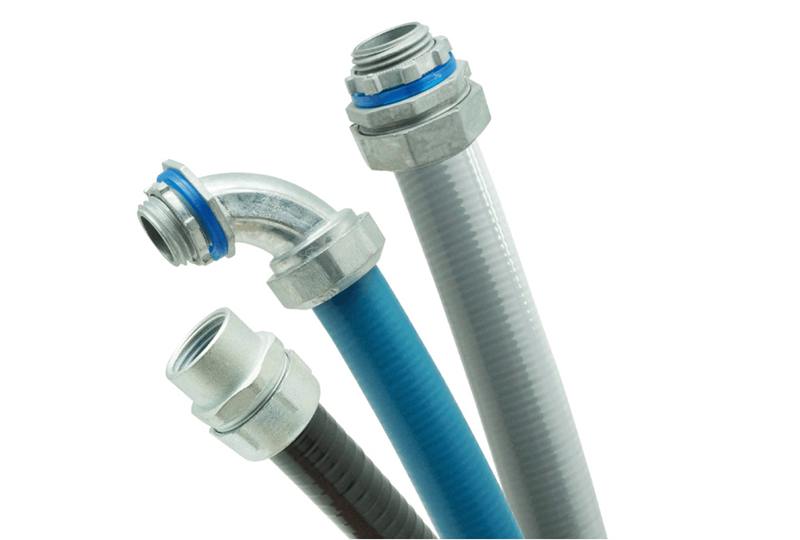Comprehensive Guide to Installation Best Practices for Flexible Metal Conduit Systems
Flexible metal conduit systems offer a versatile solution for electrical wiring installations, providing flexibility and protection in various applications. Proper installation is crucial to ensure safety, durability, and compliance with industry standards. In this comprehensive guide, we'll delve into the best practices for installing flexible metal conduit systems, covering everything from preparation to final inspection.
Understanding Flexible Metal Conduit (FMC)
Before diving into installation, it's essential to understand what FMC is and its applications. Flexible metal conduit consists of a metal core, typically made of steel or aluminum, surrounded by a protective outer covering, often made of PVC, liquid-tight jacketing, or interlocking armor. This design allows for flexibility while providing protection against mechanical damage, moisture, and corrosion.

Flexible conduit is commonly used in both commercial and residential settings for various electrical wiring applications, including:
Indoor Wiring: FMC is suitable for indoor installations where flexibility is required, such as routing wires through tight spaces or around obstacles.
Outdoor Wiring: In outdoor environments, FMC protects wiring from exposure to the elements, making it ideal for applications such as outdoor lighting or irrigation systems.
Hazardous Locations: FMC with appropriate fittings can be used in hazardous locations where flammable gases or vapors may be present, providing an additional layer of safety.
Understanding the specific requirements and environmental factors of each installation is crucial for selecting the appropriate type of FMC and accessories.
Pre-Installation Preparation
Conducting a Site Survey
Before beginning the installation process, it's essential to conduct a thorough site survey to assess the environment and identify any potential challenges or hazards. This includes:
Identifying Obstacles: Take note of any obstacles or obstructions that may affect the routing of the conduit, such as walls, ceilings, or structural elements.
Assessing Environmental Factors: Consider environmental factors such as temperature extremes, moisture levels, and exposure to chemicals or corrosive substances.
Reviewing Electrical Plans: Refer to electrical plans and specifications to determine the layout and requirements for the conduit system.
By conducting a comprehensive site survey, you can anticipate potential issues and plan accordingly to ensure a smooth installation process.
Selecting the Right Materials and Tools
Choosing the appropriate materials and tools is crucial for a successful installation. Here are some key considerations:
FMC Type: Select the appropriate type of FMC based on the specific requirements of the installation, such as the level of flexibility needed and the environmental conditions.
Fittings and Accessories: Ensure that you have the necessary fittings, connectors, and accessories to complete the installation properly.
Tools: Gather the tools required for cutting, bending, and securing the conduit, including conduit cutters, benders, and fasteners.
Having the right materials and tools on hand will streamline the installation process and help avoid delays or complications.
Installation Process
Routing the Conduit
Once you've completed the pre-installation preparations, you can begin routing the conduit according to the layout and specifications. Follow these steps:
Plan the Route: Determine the most efficient and practical route for the conduit, taking into account obstacles, access points, and required clearances.
Cutting and Bending: Use appropriate tools to cut the conduit to the required lengths and bend it as needed to navigate corners or changes in direction.
Securing the Conduit: Secure the conduit in place using straps, clamps, or other approved fastening methods, ensuring that it is properly supported and aligned.
Installing Fittings and Connectors
As you route the conduit, you'll need to install fittings and connectors to create a continuous and secure pathway for the wiring. Follow these guidelines:
Proper Alignment: Ensure that fittings and connectors are properly aligned and securely tightened to prevent leaks or disconnections.
Sealing Joints: Use approved sealing methods, such as gaskets or sealant compounds, to seal joints and connections and protect against moisture ingress.
Grounding and Bonding
Grounding and bonding are essential for electrical safety and code compliance. Follow these steps:
Grounding: Connect the conduit system to the grounding electrode system using approved grounding bushings and conductors.
Bonding: Bond the conduit system to other metal components, such as equipment enclosures or grounding electrodes, to ensure continuity of the grounding path.
Final Inspection and Testing
Once the installation is complete, conduct a final inspection to ensure compliance with applicable codes and standards. This may include:
Visual Inspection: Inspect the entire conduit system for proper alignment, secure fastening, and adherence to code requirements.
Testing: Conduct electrical testing, such as continuity checks and insulation resistance tests, to verify the integrity of the wiring and connections.
Conclusion
Proper installation of flexible metal conduit system is essential for ensuring electrical safety, durability, and code compliance. By following the best practices outlined in this guide, you can achieve reliable and efficient installations in a variety of applications. Remember to always consult applicable codes, standards, and manufacturer guidelines, and seek professional assistance if needed.


Comments
0